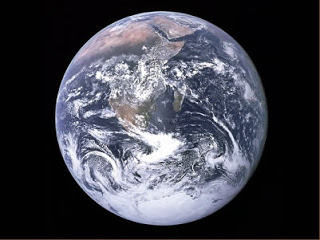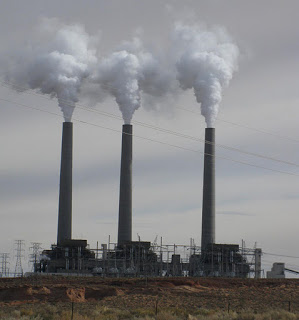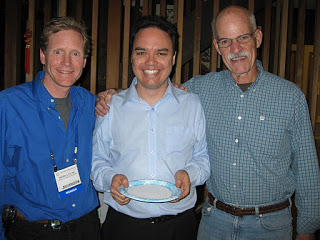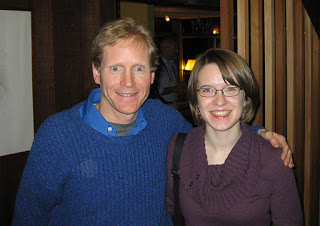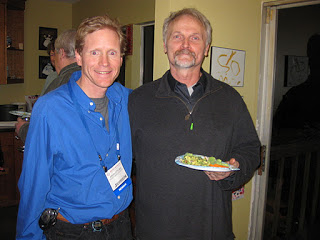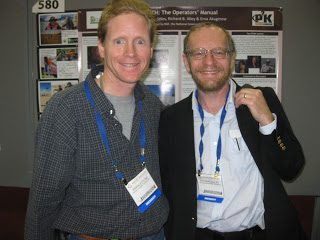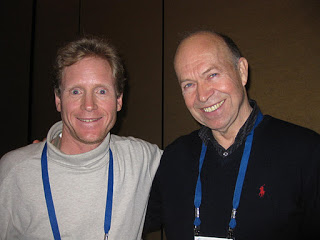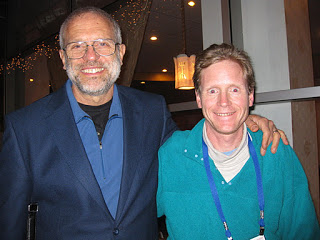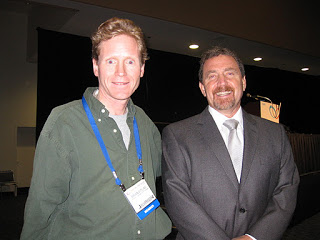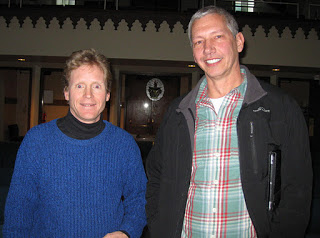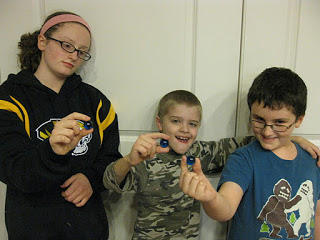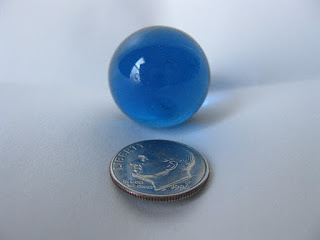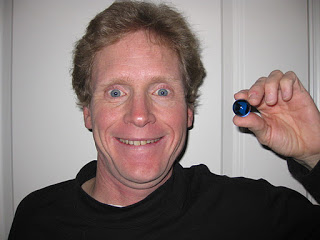
Monthly Archives: January 2012

A MESSAGE THAT STICKS
MY 12 CLIMATE CHANGE HEROES
2. John Cook
(pictured in the center) He is the creator of skepticalscience.com. This website makes climate science accessible to the layman by using easy to read, jargon-free language to debunk climate myths spread by climate science doubters or “skeptics.” Even more, John set up Skeptical Science to be a database of peer-reviewed science to best answer the skeptic’s full range of arguments. (And nobody, including John, knows why he is holding that paper plate)
A LITTLE BLUE MARLE COULD SAVE THE EARTH
FIND THAT “ONE THING,” AND STICK WITH IT

I read that title and essay by Christian missionary Keith Barnett back in the year 2000. In the essay, Keith talked about how he felt God had been speaking to him for a few years to just focus on one thing. This singular divine focus led Keith to be a missionary in Guatemala at the time.
Keith went on to explain that just like a plant growing has a tendency to grow in many directions and produces off-shoots, or “suckers.” These small off-shoots can draw of the life and vitality of the plant to useless ends. For this reason, a wise gardener cuts off the smaller offshoots. This causes the plant to direct all of its life force into the fruit of the plant, its seed, blooms, and its fruit.
This essay struck a deep accord in me because I was struggling at the time to find my “one thing” and stick with it also. At the time, I was a naturalist guide in Everglades National Park narrating the boat tours the tourists. I worked for a private company that treated its employees poorly and it did not really care about the environment. I also felt I had a deeper message to give the world than just pointing out the alligators, crocodiles, birds, dolphins and manatees in the Everglades. Still, when there was not wildlife around, which was often, I shared a message of the importance of the natural world and protecting the Everglades. However, the tourists just focused most of the time on spotting the wild animals and paid little attention my message of conservation.
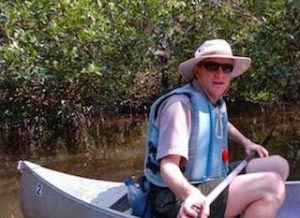
Brian Ettling, Everglades National Park, around 2006
I knew in my heart and gut that I did not want to be a naturalist guide in the Everglades forever. However, I had no idea what the vision or “one thing” was. Around this time, I found a book in a used book store, Laboratory Earth: The Planetary Gamble We Cannot Afford to Lose by Dr. Stephen Schneider. He was a climate scientist out of Stanford University. I purchased the book because passengers on the boat tour were asking me about global warming. I wanted to start educating myself on this issue. The science in the book was very technical, but I was hooked. I started reading more books on climate change over the years, especially whenever I would see a new book on this subject at Barnes and Noble.
In spring 2008, I quit working as a naturalist in the Everglades. I knew I wanted to go to grad school to study about communicating climate change. I set out a deadline for myself to be enrolled in a graduate program by 2010. Unfortunate, I did not have a pin point dedication to this goal. I got distracted by dating the wrong women, traveling, and having fun as a seasonal summer ranger at Crater Lake National Park in Oregon.
It is now the last week of 2011. I am still not in grad school yet. However, I have made major strides in following my “focus” and sticking with my deepest passion to be a climate change communicator. In this past year alone, I started this blog. I worked at the St. Louis Science Center answering questions and engaging visitors at their temporary climate change exhibit. I joined South County Toastmasters. I have successfully presented four speeches now at Toastmasters over the past year about climate change and promoting sustainable green living. For my last two speeches, the other Toastmaster members voted for me as ‘Best Speaker.’

Brian Ettling winning “Best Speaker” for Toastmasters speech, November 2011.
This past summer at Crater Lake, I created an evening campfire program on the impact of climate change on Crater Lake. This past September, the National Park Service invited me to attend the 2011 NASA ‘Earth to Sky’ conference in Washington D.C. on successfully communicating climate change with park visitors.
Within the past month while currently living in St. Louis, Missouri for the winter, I co-founded Climate Reality St. Louis Meet Up group. This is a group of locals that meets regularly to discuss the impact and solutions to climate change in St. Louis. In early December, I attended the American Geophysical Union Conference in San Francisco where I got to meet and interact with America’s top climate scientists and communicators.
In 2012, I hope to meet with professors at grad schools like Columbia, George Mason, and Colorado State to find a program that can really enable me to be a top climate change communicator. I also hope to give more speeches at Toastmasters and elsewhere about climate change. I also hope to return to Crater Lake to present my climate change evening program again and keep improving it. 2012 is going to be an exciting year for me as I edge ever closer “finding that one thing and sticking with it” as a climate change communicator.

